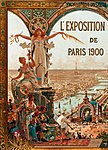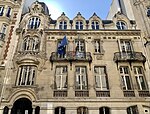Fête de la Concorde
1848 in FranceAC with 0 elementsFestival stubsFestivals in ParisFrance stubs ... and 1 more
History of Paris

The Fête de la Concorde was a festival held at the Champ-de-Mars in Paris, France. The architect Henri Labrouste and the painter Pierre-Victor Galland contributed to the decoration of the festival in 1848.
Excerpt from the Wikipedia article Fête de la Concorde (License: CC BY-SA 3.0, Authors, Images).Fête de la Concorde
Place Jacques Rueff, Paris 7th Arrondissement (Paris)
Geographical coordinates (GPS) Address Nearby Places Show on map
Geographical coordinates (GPS)
| Latitude | Longitude |
|---|---|
| N 48.856111111111 ° | E 2.2983333333333 ° |
Address
Place Jacques Rueff
75007 Paris, 7th Arrondissement (Paris)
Ile-de-France, France
Open on Google Maps









